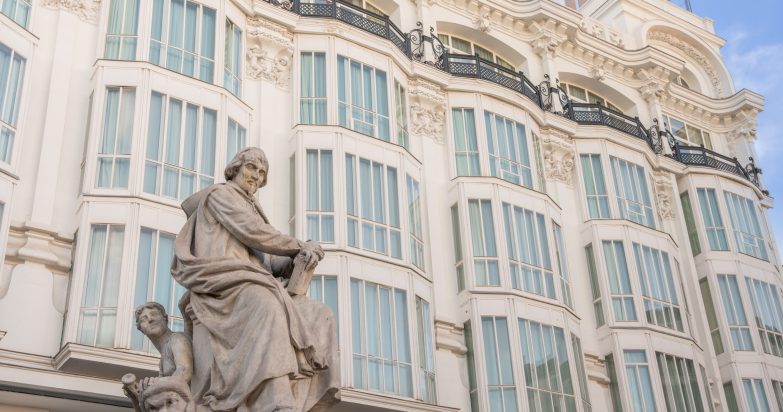Spain is a top tourist destination, with its bustling capital city of Madrid serving as a hub for exploring the country’s many treasures. From its vibrant culture and amazing food to its beautiful beaches, Spain has something for everyone. Thanks to Madrid’s busy airport, it’s easy for international travelers to make their way to this exciting destination. But there’s more to Spain than just sangria and sun – come discover all it has to offer!
- Accommodation
- Paperwork
- Empadronamiento
- Health insurance
- Social security
- Opening a Spanish bank account
- How to get around the city
- 3 bonus tips
Indeed you will find that located in the city’s historic central square, Puerta Del Sol, a small stone slab marks the geographical center of Spain. The marker sets the Zero Kilometer point, the point from which distances are measured in Spain—specifically, it’s the starting point for measuring the distances of the country’s six national roads, A-1 to A-6.
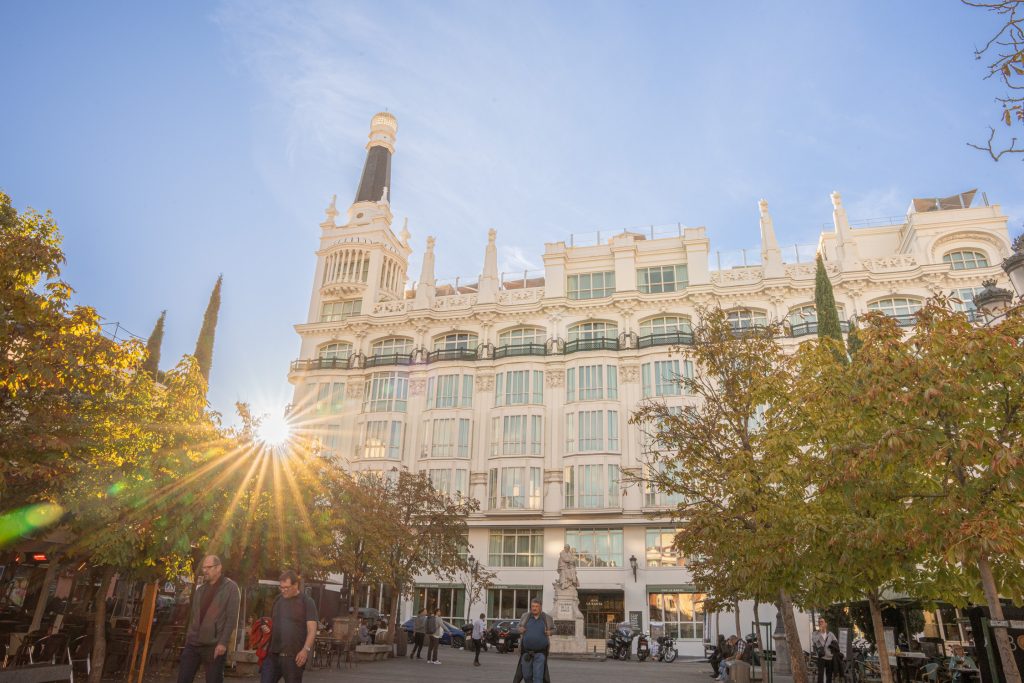
This is a capital city that has everything: rich cultural heritage, gorgeous cuisine, has the texture and feel of a vibrant and international city with the capability to provide all the resources and access you need. It is simply a dream!
But how do you go about making a dream a reality by relocating to Madrid? Either temporarily, permanently, or on a go-with-the-flow basis? Navigating the moving and settling-in process can be daunting, especially for the unprepared, and especially in our dynamic and post-pandemic world where rules can be in flux. Where do you even begin?
Fear not.
Continue reading below for tips on how to find a place to live, how to navigate bureaucracy, paperwork, and insurance, where to make new friends and socialize, and how best to explore and fall in love with this city!
1. Accommodation
Find your barrio (neighborhood) first. Then you will find your home.
This is ultimately the most critical advice that can be given to ensure you get bang for your buck, feel happy and content, and to make Madrid serve your interests. Madrid can be sectioned off into little barrios, that each have a distinct feel, maybe some areas, such as Salamanca would retain the classical Arte Nouveau decor with white facades, some would be red brick buildings that were heavily revamped during the eighties with green awnings outside each balcony, the financial hub of Castellana might be more modern. It is worth finding temporary accommodation first to allow you to explore the city and the barrio that best suits you before settling on something longer-term.
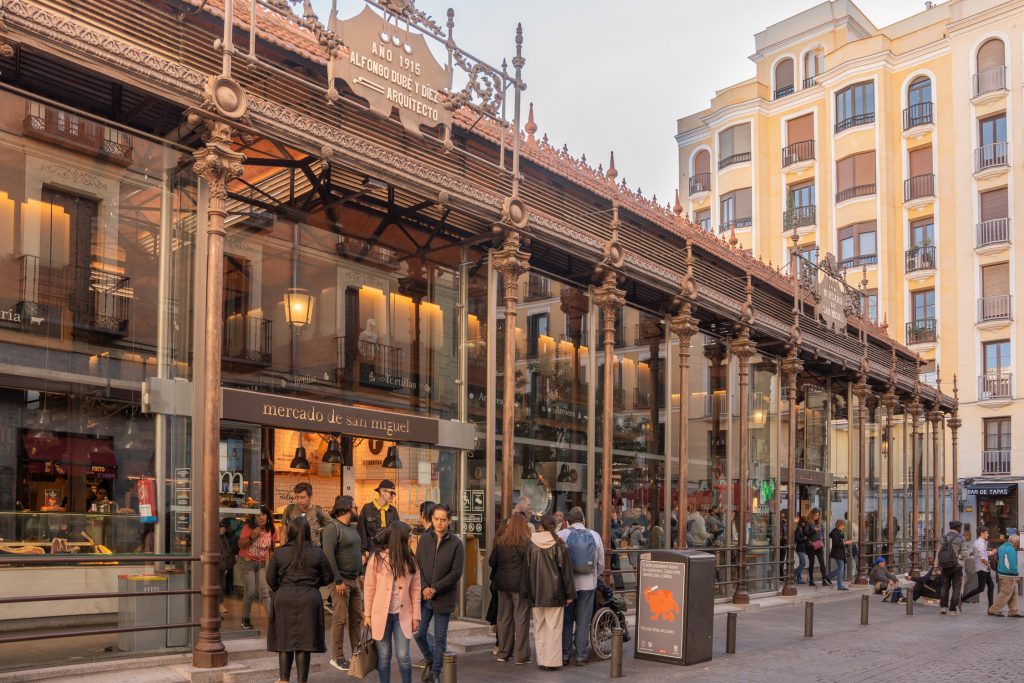
When it comes to price tags, it can be a mixed bag. Again, this depends on which barrio you might find yourself settled in. Prior to COVID-19, rents in Madrid reached €16 per sq mIn general, so look forward to forking up at least €1000 for a studio apartment in central zones and around €1300 for 2-bedroom apartments.
If you are looking for a single room, then expect to find offerings from 5-bed apartments from around €400-€700 factoring in space, location, and whether your room is internal patio facing or external windows. When looking for accommodation, ensure that the Comunidad tax is already included by asking your landlord, and ask whether bills are included or excluded from the overall rental price.
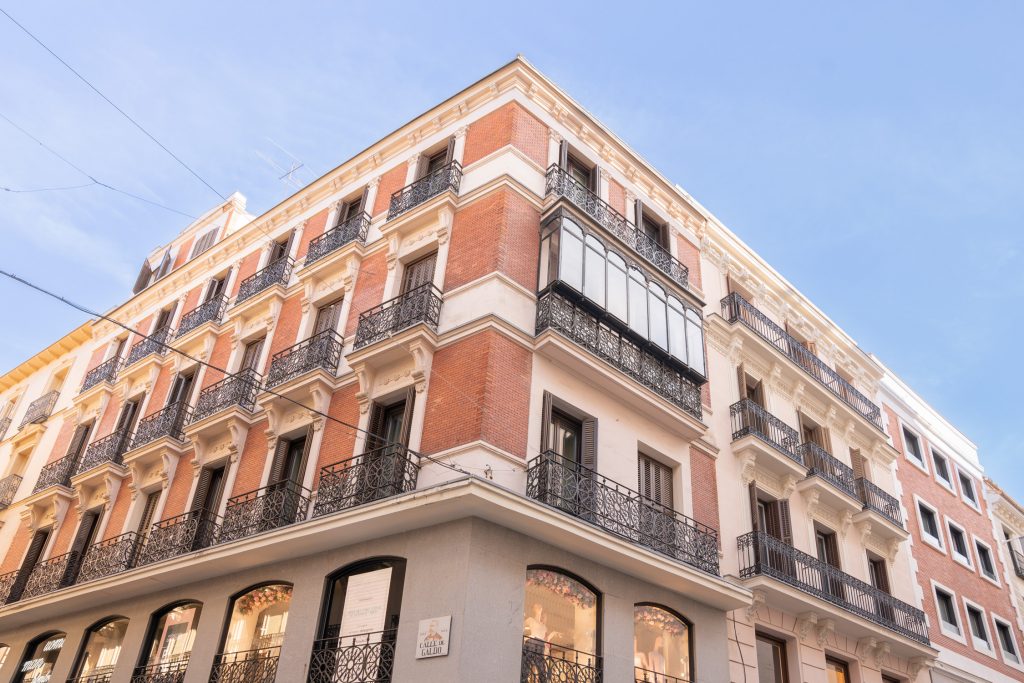
Even though rental prices are forecasted to grow even further in the future, and there have been slight increases in living expenses, it is still roughly manageable in comparison to other major European capitals such as Paris or London.
Most people find accommodation through word of mouth or through property portal apps such as Idealista, Fotocasa, pisos.com, and spotahome which is used by expat renters and foreigners looking to find a home in Madrid.
Certainly, if you’re looking for a hassle-free search combined with excellent facilities, sustainability, and socializing then try the increasingly popular concept of coliving. This is a revamped concept of shared living with a residential dorm feel allowing you to have your own private room with all the household appliances already sorted for you, as well as laundry and cleaning services. It is also an excellent way for you to have a sense of community and meet people in the city. Cohabs currently has a beautiful and fully furnished 430m shared living house, Leis 8, based in the Tetuán neighborhood of the city that also offers a terrace and state-of-the-art Gym.
2. Paperwork
If you are a foreigner that intends to relocate or move to Spain, then it is essential to have patience when dealing with Spanish bureaucracy.

Here is an overview of what you need to do and further tips:
- Determine which type of residency requirements you meet. If you are a citizen of EU/EEA or Switzerland, it will be more straightforward for you to settle in Spain. Nevertheless, the most essential is to go and get your NIE , which is a personal and unique number that is assigned to foreigners who, for economic, professional, or social reasons, are engaged in activities related to Spain and require identification in the country. You can make an appointment through the government portal here but bear in mind that it is a process to find available appointments. Some people have found employing agencies to sort their documentation to be a neater trick and save them a few grey hairs.
- If you happen to need a visa instead, ensure that you or your employer has all the documentation and paperwork in order when you attend your appointment at the local police station or immigration office and that you pay your tasa form already paid for (rather annoyingly you have to take the form to a bank and scan the barcode on the form). Depending on the generosity of each Spanish civil servant working that day, you might have to restart the entire process or make a new appointment if you turn up to an appointment with something missing. Beware!
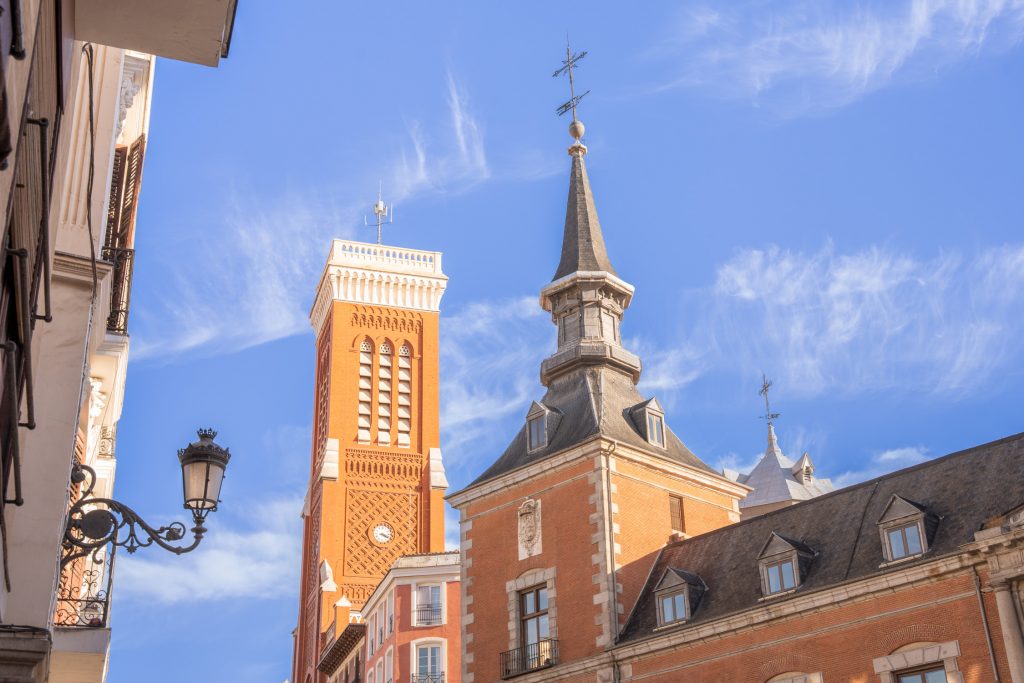
- Family members of EU, EEA, and Swiss citizens often have the same benefits as regular citizens, though they will need to apply for an NIE too, Family members of non-citizens will have to apply on their own or through your employer.
- In 2023, Spain introduced the Digital Nomad Visas for non-EU citizens with quite substantial tax incentives including a reduction in corporation tax from 25% to just 15% for up to the first 4 years. This applies only to those who have not been resident in Spain in the past four years. Check with your local Spanish consulate in your country to apply.
3. Empadronamiento
The empadronamiento (also called padrón) is a city hall registration to inform the municipal register where you currently reside. It is a way to accredit your residency in Spain and allows you to integrate into the Spanish community as well as other innumerable benefits. For example, if you want to get the aforementioned NIE or get married and get a health insurance card. It is a free process that needs to be renewed every five years but make sure that you check with your local town hall in Madrid which documents you need to bring on the day of the registration.

4. Health insurance
It is important to have health insurance to cover any medical expenses you may incur. There are several options available for obtaining health insurance in Spain, including public and private health insurance plans.
Here is a general overview of the process for obtaining health insurance in Spain:
1. Determine your eligibility for public health insurance: If you are an EU/EEA citizen, you may be eligible for public health insurance in Spain through the national healthcare system (Sistema Nacional de Salud). This insurance is free for EU/EEA citizens, but you will need to apply for it. If you are a citizen of a non-EU/EEA country, you may still be eligible for public health insurance if you are a legal resident of Spain, have a work contract, or are studying in Spain.
2. Apply for public health insurance: To apply for public health insurance in Spain, you will need to visit a Social Security office (Oficina de la Seguridad Social) and bring the following documents:
- Your passport or national identification card
- Proof of your legal residence in Spain
- Proof of your work contract or enrollment in a Spanish educational institution, if applicable
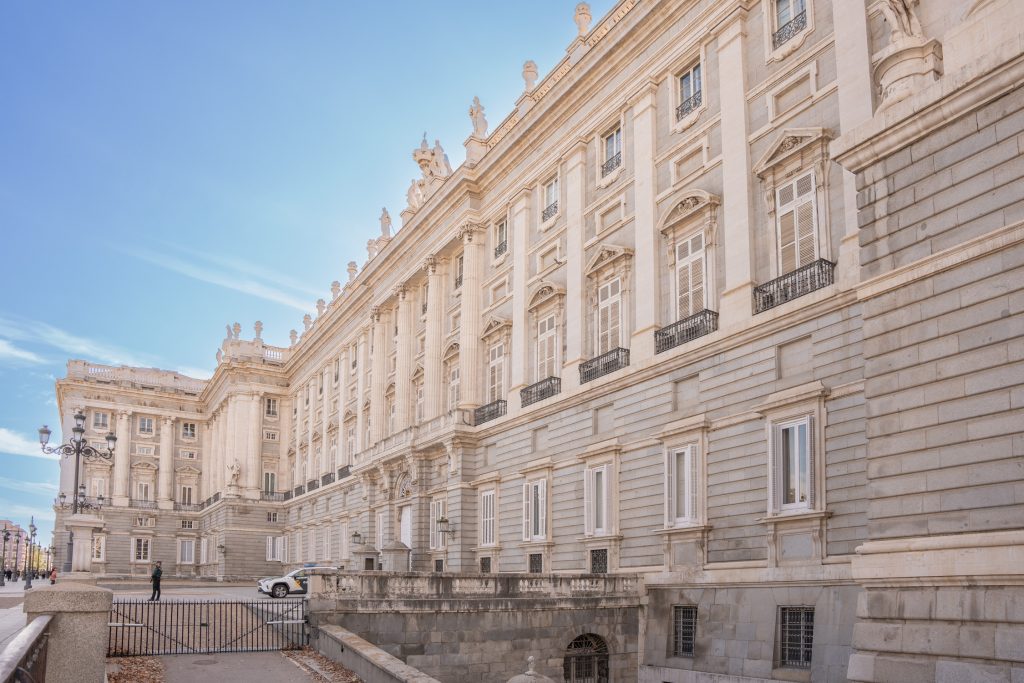
3. Enroll in a private health insurance plan: If you are not eligible for public health insurance in Spain, or if you prefer to have private health insurance, you can enroll in a private health insurance plan. There are many private health insurance companies in Spain that offer a range of plans and coverage options. You can compare different plans and choose one that best meets your needs and budget.
4. There are now a number of English-speaking private practices in Madrid that serves the international community, as well as provision for mental health and holistic practices for those who do not yet have a working command of the Spanish language.
5. If you happen to work for a multinational employer or Spanish company, you are entitled to a free annual health check. Make sure you take advantage of this benefit!
5. Social security
You would typically apply for your social security number by filling out forms and going to the employment office (oficina de empleo) in your area or through your employer. If you are self-employed, you will have to register as an autonomo. Remember to fill in your tax returns by May and 30 June following the end of the tax year, failure to declare tax will often result in penalties.
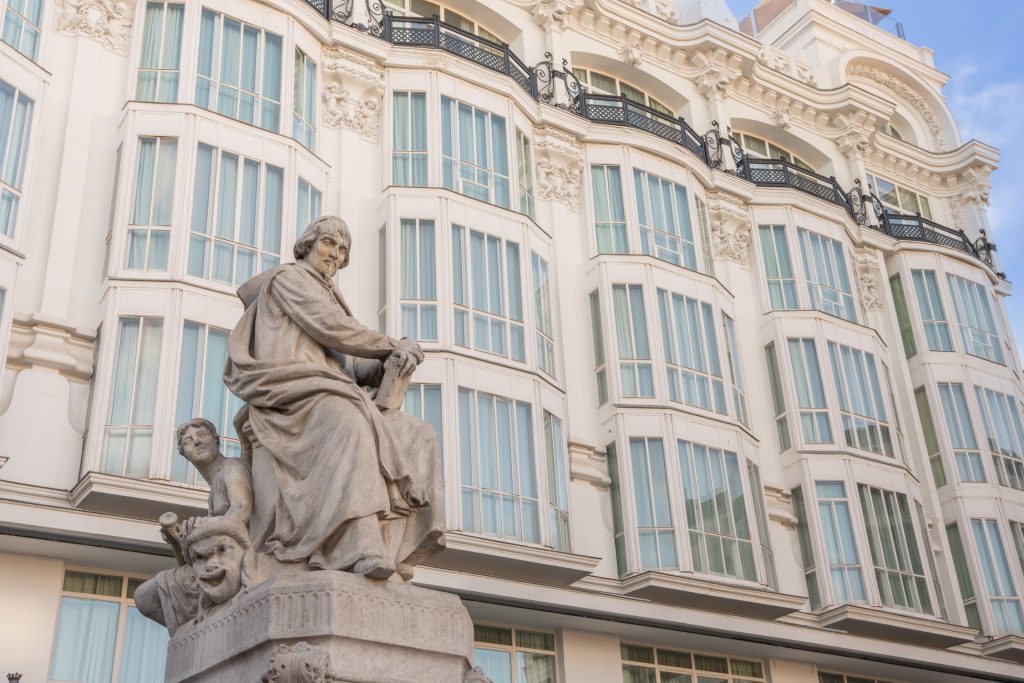
6. Opening a Spanish bank account
To open a bank account and get paid or to pay your bills, you need to show proof of address. Circumvent this tricky stage by giving a temporary address when you first open your account (if you do not have an NIE yet, then show your passport when applying). Again, having your paperwork in order and praying that the civil servant working in the bank is having a good day is essential to a successful application. Some banks will also assign you a gestor (accountant) to deal with any issues related to your account or with tax.
Foreigners in Spain have often been left underwhelmed by the client service experience of some local Spanish banks or unimpressed by the offerings by banks. BBVA offers a no-frills online account with a physical card and use of its cash machines with 0% commission fees, whereas Deutsche Bank and ING now have physical branches in the city. Modern online banks such as Openbank, N26, and Revolut are also popular options, and also offer 0 commission on foreign transfers if you need to transfer money between your different international accounts
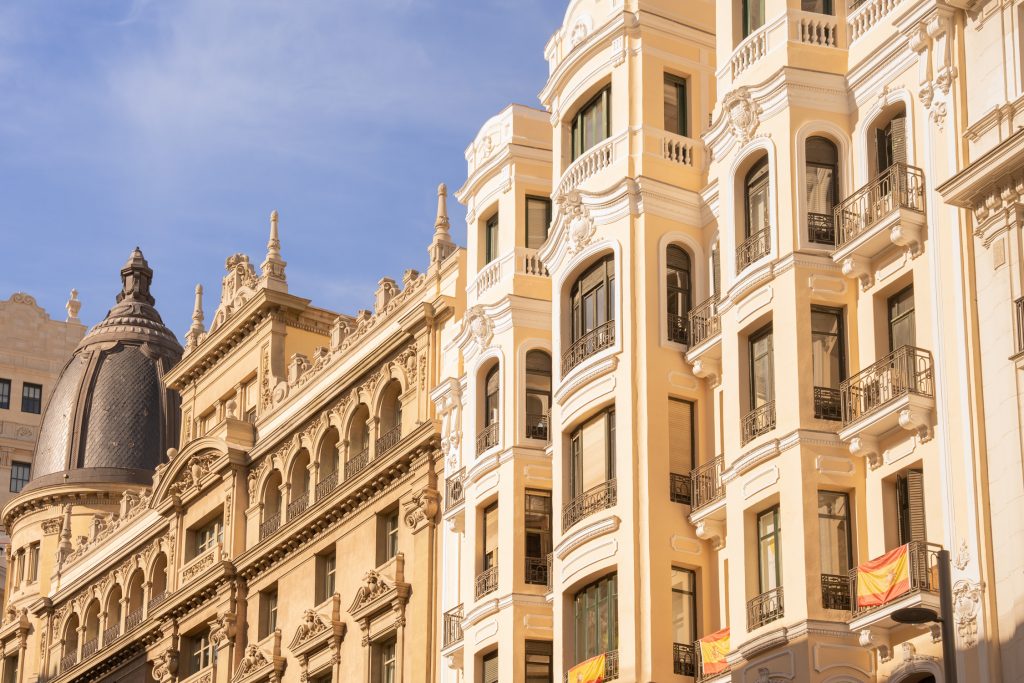
7. How to get around the city
Madrid is making moves to introduce bike lanes and become a greener city with the city council offering subsidies for the purchase of electric bikes, applicable to already being residents and this year only. Otherwise, there is the public bike rental scheme, BiciMAD, which is available to residents, visitors, or casual users with different tariffs. Electric bikes and scooters offered by Bird and Lime are also visibly dotted around the city and can be operated by downloading the respective apps.
Madrid boasts a fantastic public transport system with inter-city buses and the metro system to transport you to different neighborhoods. The metro system is fairly easy to use, with 13 lines (color-coded), and its map is easily downloadable here. Trains are in circulation every day from 6:00 am until 1:30 am and 2.30am on weekends. Look forward to 24hr metros at the weekends in 2023 too! It’s worthwhile investing in the above (30 days or annual) if you’re staying for a long term in Madrid, with the tariffs varying depending on how many zones you cross – Zone A being the central area. There are also benefits for those under 30, pensioners, and large families too, not only offering travel on the metro but also the buses and light raid train.
The city is also served by the Cercanias, a commuter rail service that serves Madrid and its outer suburbs. From here you can take shorter day trips to El Escorial (with its famous monastery) or Navacerrada (a popular skiing area), or take long-distance trains to other Spanish cities.
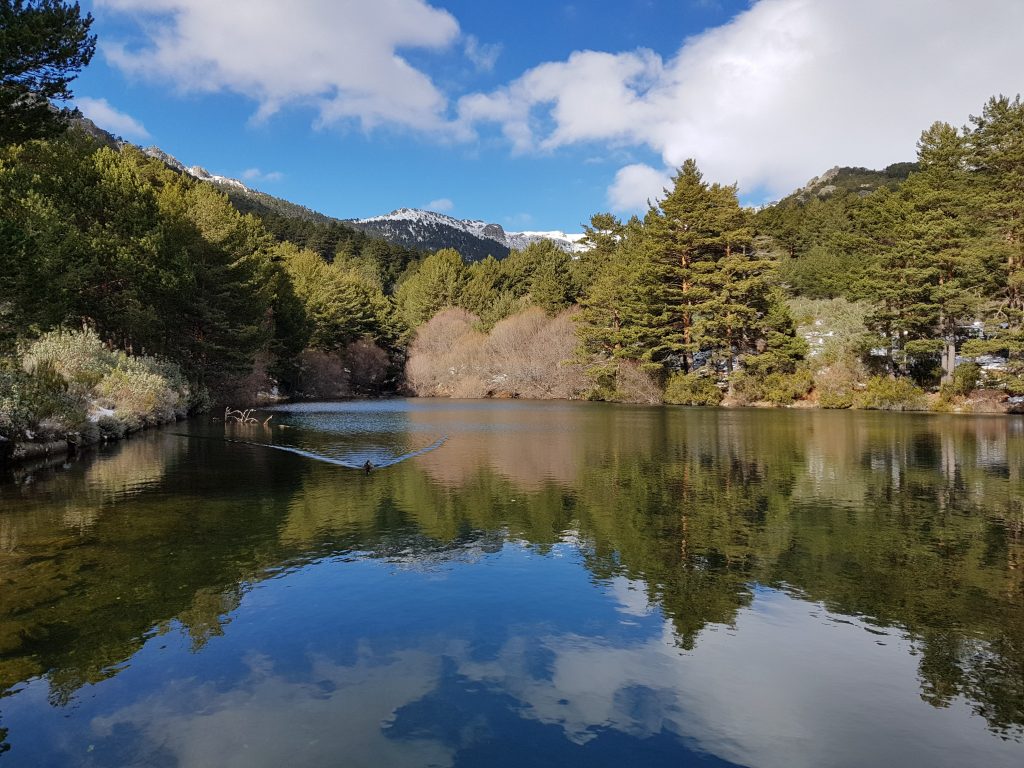
3 tips for fully embracing Madrid
You will find a treasure-trove worth of material online and in the guidebooks about how best to socialize and explore Madrid, what to do and what to see. However, we must emphasize these three tips to fully see Madrid and mix with the Madrileños.
1. Parque El Capricho
Madrid has a beautiful number of parks, with Retiro Park being the most famous. Do try to visit El Capricho (Capricho Park) located in Alameda de Osuna, with its English landscape influence, famous iron bridge, bunker, maze, and lake. It is open to the public on the weekends and accessible by bus and metro Line 5 (the green line).
2. Traditional Spanish bars
They say they are dying out.
With a growing number of hipster, specialty coffee places with fancy avocado on toast growing to serve the international community, you might rarely take notice of the Spanish bar from the old Madrid landscape. Small, unglamorous, flimsy napkins; shrimp-smelling metal countertop and La caña bien tirada. But it’s part of the charm for an authentic experience of the city. Try our favorites such La Casa Alberto (Calle de la Victoria, 12) , and Muñiz (Calle de Calatrava, 3) both serving traditional tapas. Indeed most traditional Spanish bars also serve free tapas (usually some crisps or a little meat on bread) with your beer so make sure to take advantage!
3. Wandering the streets
Madrid is the perfect city for wandering the streets and really getting to know its secret charms during a quiet afternoon.
There is no doubt about it.
You can admire the beautiful architecture by wandering up and down the city’s shopping broadway, Gran Vía. For tree-lined passageways leading to the city’s emblematic museums, try Paseo del Prado and then Paseo del Recoletos with its gardens and sculptures. The old town parts of Madrid include the beautiful Calle Segovia leading to its aqueduct, and Calle Cava Baja which is lined with tapas bars in the Latina neighborhood. For a more urban touch try Bravo Murillo which has its own flea market offering trinkets and trifles on Sundays and goes through the Tetuan area, where the Cohabs building is situated.

In a nutshell, moving to a new city always has its challenges. Madrid is no different in terms of bureaucratic paperwork and waiting times. However, by following the tips above and doing your research, you will find yourself enjoying (in the endearing words of the former mayor, Ana Botella): a relaxing cup of café con leche in the Plaza Mayor.
